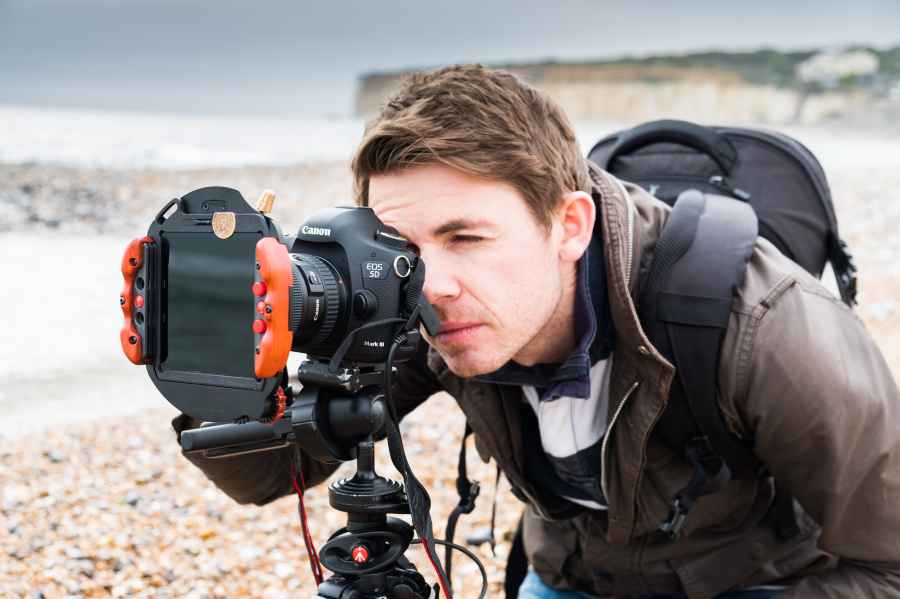The filter holder is an accessory that serious photographers know extremely well. It’s pulled from our bags when we want to load one or more filters in front of the lens, its purpose being to keep them secured in position while we concentrate on everything else that goes into capturing an image. If someone told you to go out and make your own filter-holder system from scratch, it most likely wouldn’t look much different from those that are already offered by the big-brand filter manufacturers.
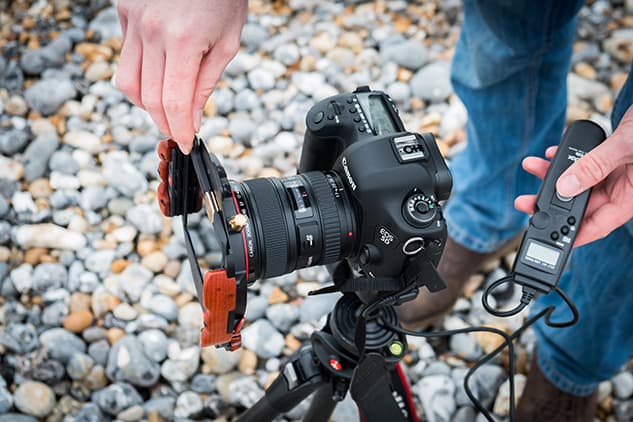
On the last day of this year’s Photography Show I was handed a box with the words Wine Country Camera printed on it. It seemed a peculiar name for a new accessory manufacturer but inside was an entirely new filter-holder system that’s been two years in the making. Designed to overcome the problems of filter flex, light leaks, polarisation and the installation of filters without disturbing critical focus, the Wine Country Camera filter-holder system is rather different from what we’ve seen before. It looks, though, like it might have great potential among those who use filters on a regular basis and who are serious about their craft. To find out how it works and what it’s like to use, we took the new holder system to the coast, where we put it through its paces.
Features
The Wine Country Camera filter holder is rather different from your average filter holder in that it accepts a circular removable polariser on the inside of its robust metal body. Mounting a polariser to a holder in this way could make it difficult to rotate when it’s sandwiched between the lens and any filters that are added via the holder’s drop-in slots at the front. To counter this, the designers have added a clever adjustment control at the lower-left corner of the holder. A wooden adjustment knob turns a cog that engages with teeth around the circumference of the polarising filter, allowing users to rotate it clockwise or anti-clockwise to maximise or minimise the admission of polarised light.

Loading the circular, removable polariser into the holder couldn’t be easier. You simply angle the filter down and rotate it slightly so the teeth of the filter mesh with the teeth of the cog. The polariser filter is then locked in place using the red levers at the rear of the holder, which locate with a very satisfying click. After screwing an appropriately sized metal adapter ring to the front of your lens, the holder can then be pushed on and secured in place using the gold knob at the top.
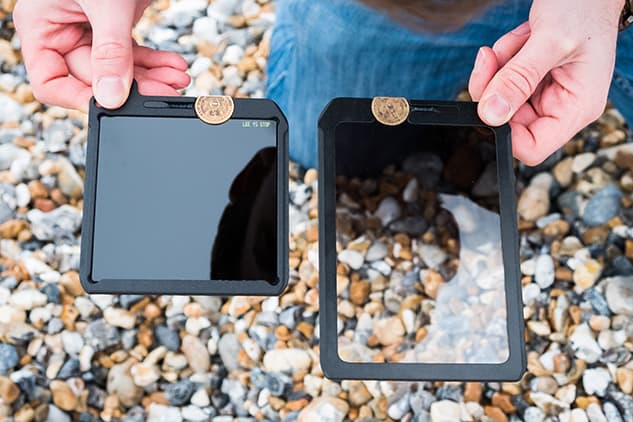
The removable polariser is just half the story. At the front of the holder are slots into which it’s possible to load up to three additional filters. The difference between this holder system and your standard filter holder is that filters aren’t loaded directly into the slots provided (something that can cause stress as well as wear the edges of a filter over time). Instead, you load them into what are known as ‘filter vaults’. These surround the filter on its four sides, eliminating internal reflections caused by light entering via the edge of the filter, as well as offering added protection from damage when they’re transported and being used. It’s best to think of the vaults as a cartridge that holds the filter and is slotted into the filter holder.

To prevent light leaking between an ND filter and the lens, there’s a recess just behind the slot that’s closest to the lens. Each filter vault features its own engraved wine coin, which should always appear on the right when looking at the holder from the front. The wine coin is essentially a locking device that’s rotated 180 degrees after the filter has been inserted and which prevents it falling out. The way this wine coin has been engineered means it doesn’t add any additional height or size to the vault itself, ensuring it slots into its filter vault pouch with ease.

For our review we were supplied with the entire contents of the holder kit as stocked and sold by Robert White. (www.robertwhite.co.uk). This consists of the filter holder as well as a 100x100mm ND filter vault, a 100x150mm grad filter vault (additional vaults are sold separately) and the circular polariser. It’s worth noting that we were also provided with a selection of adapter rings but these are sold separately to match the size of your lens filter thread.
In Use
Prior to heading out and using the system, I took a few minutes to pre-load the vaults with the filters I intended to use. The Lee Filters Big Stopper fitted into the square 100x100mm vault with ease, whereas my Lee Filters ND resin grads proved to be a slightly tighter fit in the 100x150mm vault. Out of curiosity I wanted to see if the 100x100mm vault would accept a Cokin Nuances ND1024 filter. This highlighted that the filter is thicker than the 2mm tolerance with which the vaults are made. The good news is that we’re told a solution for Cokin Nuances filters is currently being worked on and should be available soon.
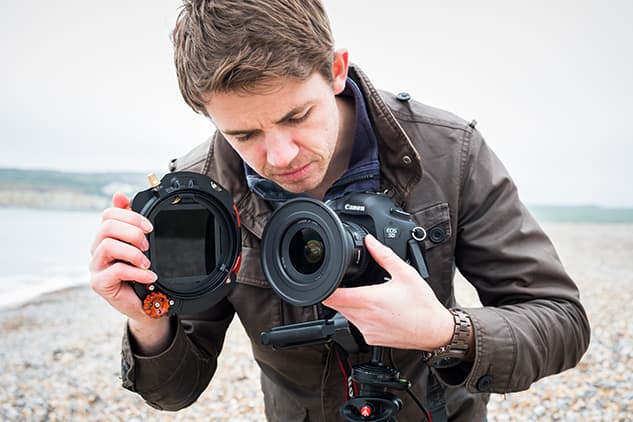
It’s not until you start using the filter holder that you really start to appreciate how it can make the experience of using filters a much more enjoyable one. With the camera locked off on a tripod and my right eye up against the viewfinder, I found myself locating the wooden control knob with my left hand and gently rotating the polariser to get the desired effect, without even thinking about it. The real beauty of operating the polarising filter in this way is that you don’t have to get your hands anywhere near the lens, which could disturb the focus.

After testing the polariser I removed it and focused on using the vaults at the front of the holder. As anyone who has accidentally dropped a filter will know, the riskiest time is when loading or removing one from its holder. The advantage of securing the filter in a vault is that it offers better grip than the super smooth surface of the filter itself, which can slip out of your hands when it’s wet or cold. The vaults slide effortlessly into the holder and are vertically adjustable using the red buttons at the side.
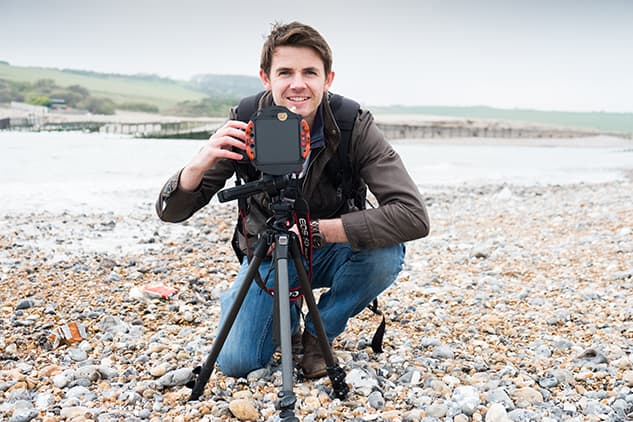
What’s particularly good about the vaults is that they’re designed with a catch feature so they can’t fall out. Although I did swap the filters in the vaults during my testing, it’s not recommended to do this as it could lead to you accidentally dropping or damaging a filter. In an ideal world you would buy a vault for each filter to save having to swap them over. Doing so would also prevent you having to handle your filters and save you having to clean them of fingerprints quite so often.
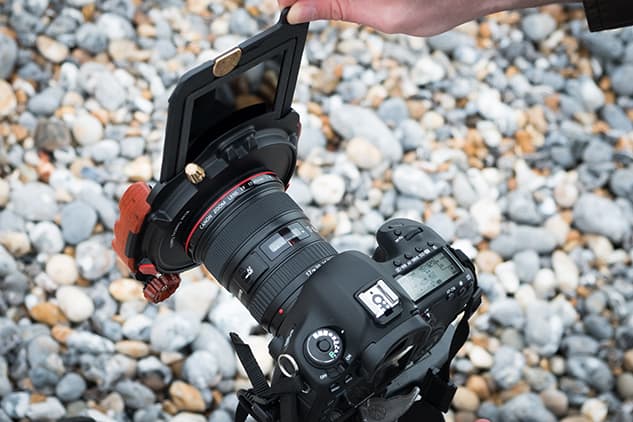
As a frequent Lee Filters user I was intrigued to find out how this filter holder would work. What I like about it most is the way ND filters and ND grads can be slipped in and out quickly with minimal fuss, and without having to touch the filter after it has been loaded into the vault. The vaults reinforce the installed filter’s rigidity while preventing the sides from having to come into direct contact with a filter holder’s slots. This protects the surface of the filter and helps ensure sharp results by keeping the filter perfectly flat.
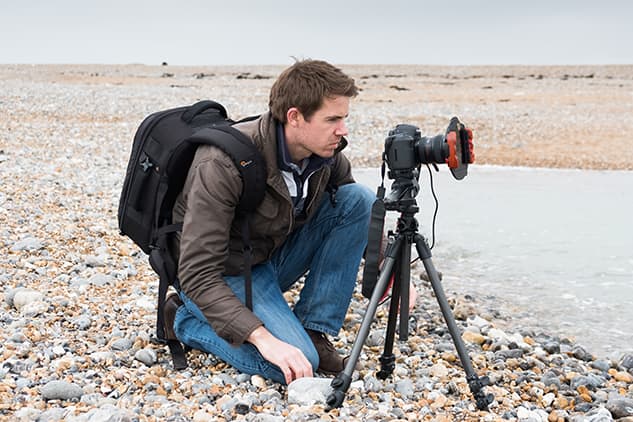
My experience of using the polariser, holder and vaults in the field was very positive and there’s little you can really fault with the way the holder performs. The only thing that did spring to mind as I walked back to the car after an afternoon’s testing was whether a variable ND filter could be made to the same size and specification as the polarising filter. Having the option to drop in a geared variable ND filter like you can with the polarising filter would add an extra string to the system’s bow.
Our Verdict
We’ve seen many photo-related products improve but the classic filter holder has remained much the same. This new filter-holder system from Wine Country Camera changes that by addressing some of the challenges filter users regularly face. It successfully overcomes problems such as filter flex, light leaks and filter damage that can occur when working under pressure or in inhospitable environments.

It’s not cheap, though. Add a couple of adaptor rings to the kit we’ve reviewed here and you’ll be looking at spending in excess of £500. This might seem like an absurd amount of money to spend on what is essentially a filter holder with a high-quality, multi-coated Schott glass rotating polariser and a couple of protective vaults that encase the sides of your filters. However, this isn’t your average filter holder – it’s a filter holder on steroids designed for photographers who use 100mm filters on a frequent basis and demand one of the best filter-holder experiences money can buy.
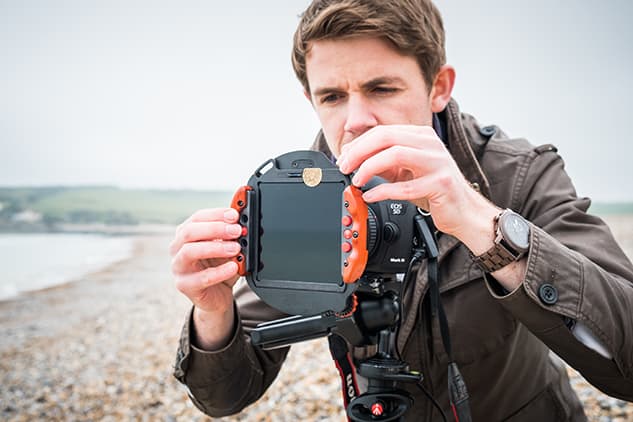
If you own a few 100x100mm or 100x150mm filters and use them every once in a while, dropping the kind of cash you’ll spend to own this kit simply wouldn’t be worth it and you’d be better off using the filter holder you already own. Use your filters on an almost daily basis, however, and you’ll find the outlay is far better justified. It’s a product that not only provides extra care for your filters but makes the process of using them easier and more enjoyable when you’re out in the field, too.

